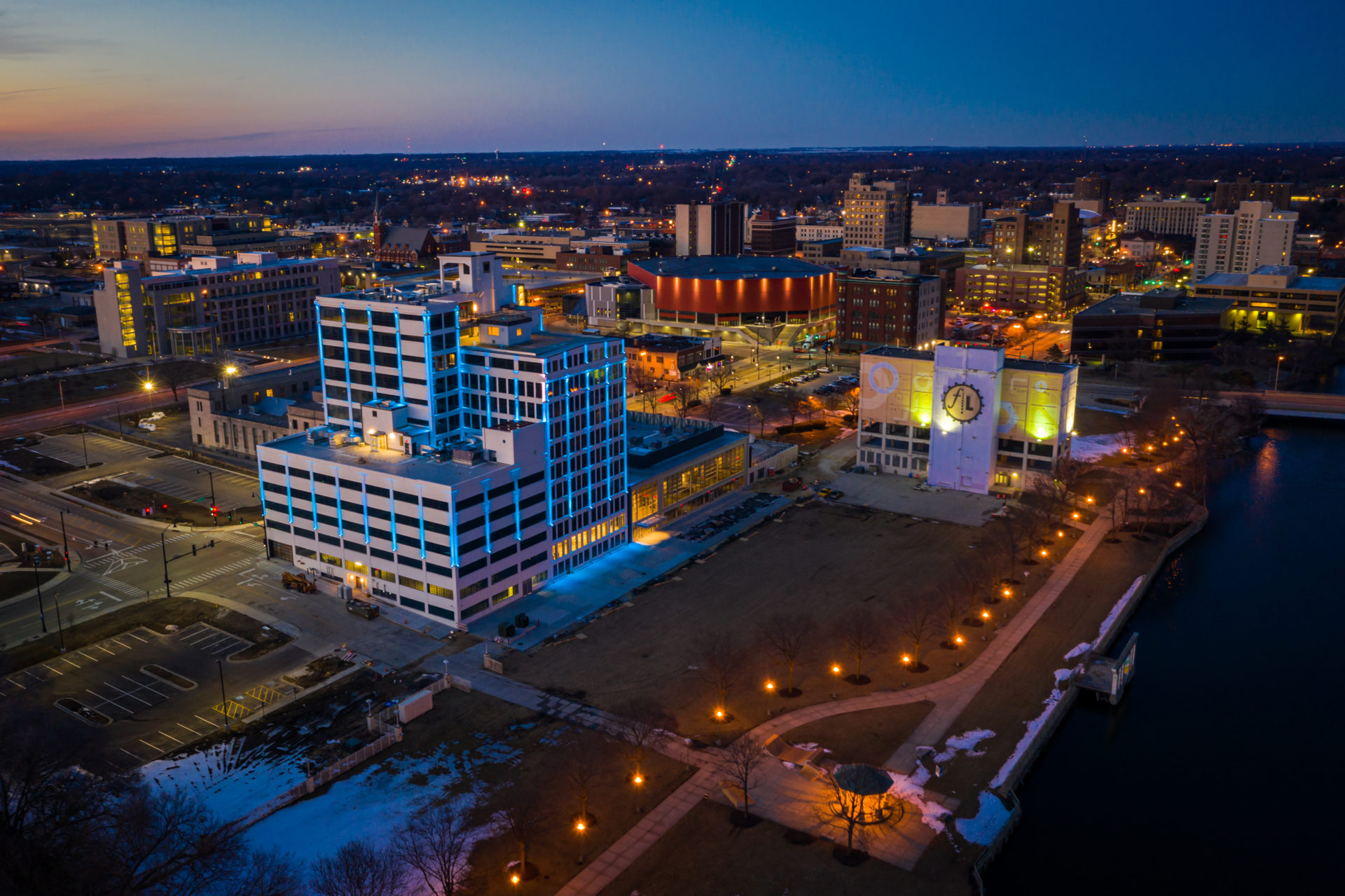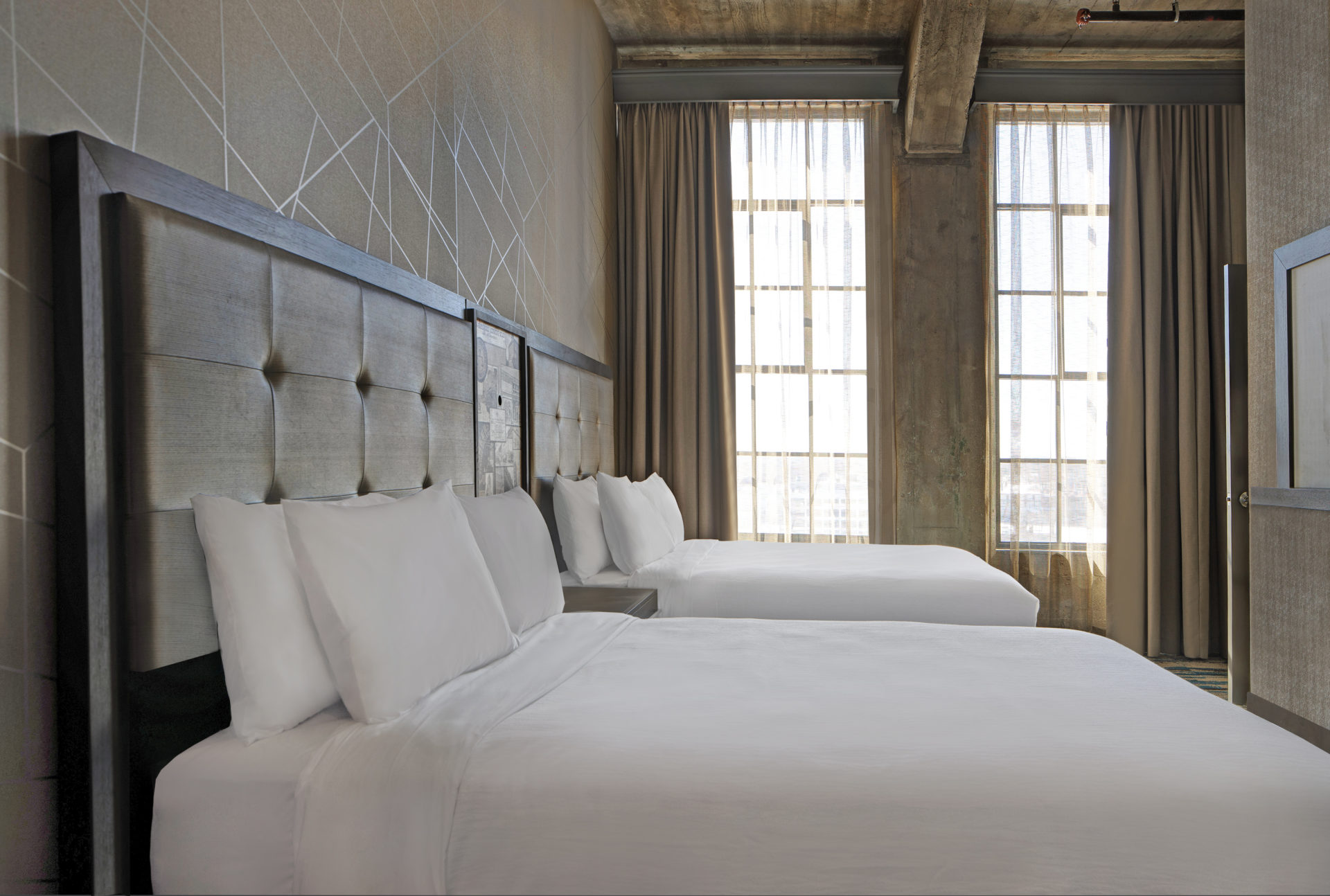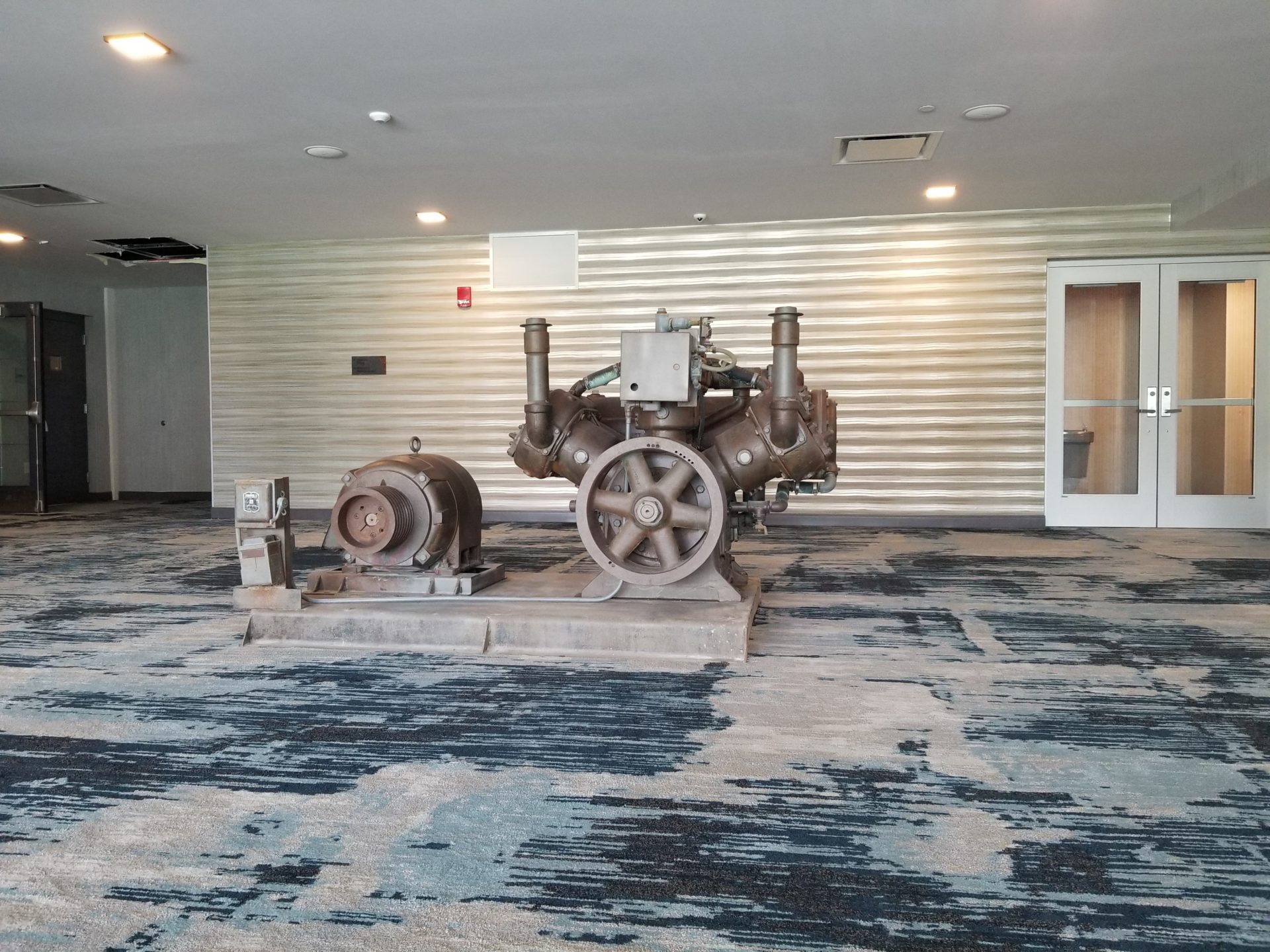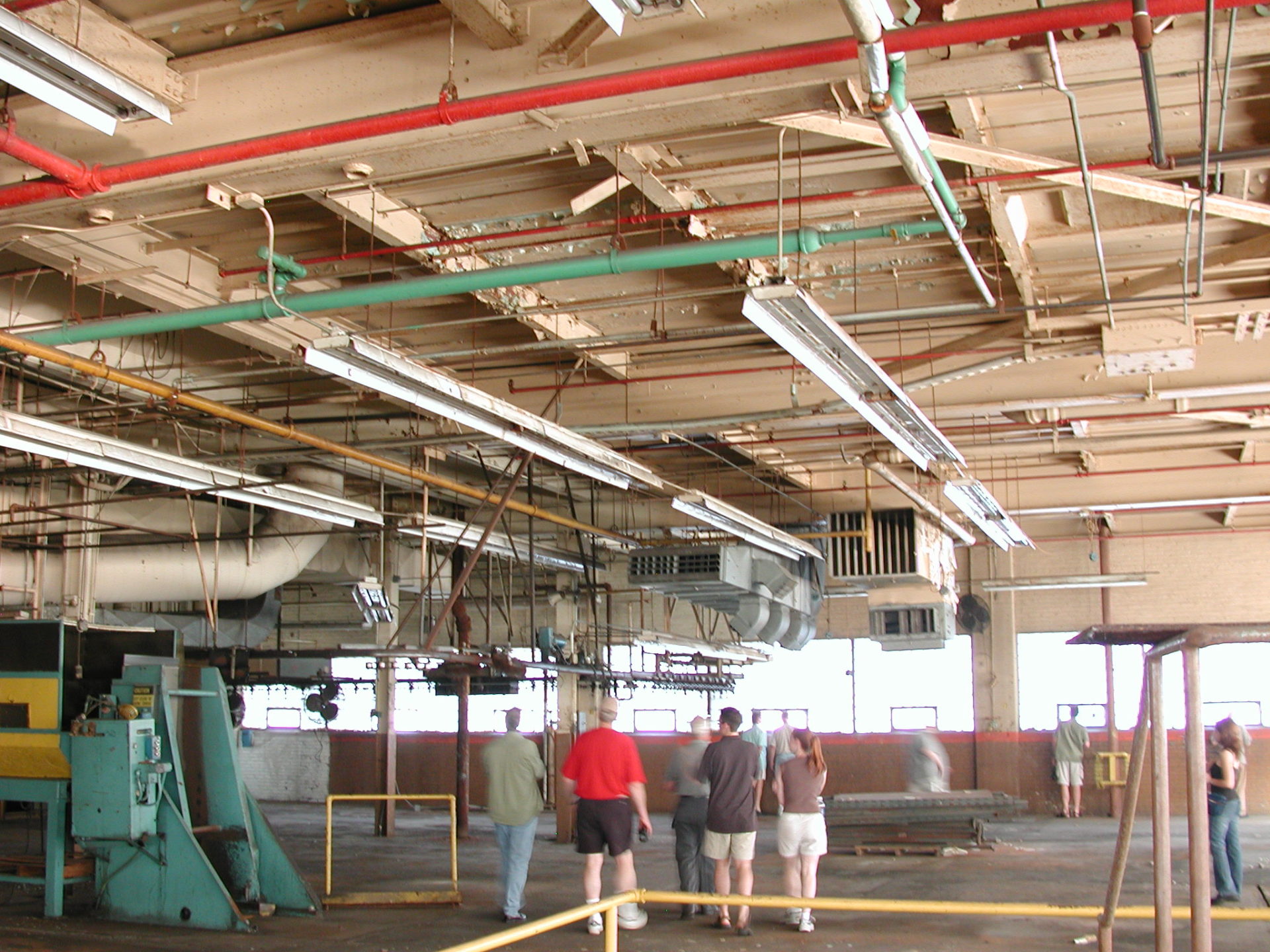2020 Landmarks Illinois Richard H. Driehaus Foundation Preservation Award for Advocacy
The Friends of Ziock (FOZ) advocacy group successfully brought awareness and appreciation to the National Register listed Ziock Building in Rockford, a former factory built between 1912-1950. FOZ’s efforts, which included a commissioned study demonstrating the desperate need in Rockford for a hospitality development, compelled Gorman and Company to redevelop the former factory into the first downtown hotel in the city in 50 years. The new rehabilitated structure is now home to an Embassy Suites by Hilton, including hotel and convention space. The project took eight years to complete, but the President and CEO of the Rockford Area Visitors and Convention Bureau, John Groh, said, “In addition to opening Rockford to new tourism markets and customers (e.g. meetings and conferences, leisure customers and corporate travelers), I believe the redevelopment of this building will signal to the community that big dreams can be realized, that change is possible and that collaboration yields incredible returns on effort.” Landmarks Illinois called attention to the Ziock Building in 2015 as part of its “Historic Properties in River Edge Redevelopment Zones” listing on its Most Endangered Historic Places in Illinois. Today, Landmarks Illinois is recognizing FOZ for showing how a few strong advocates can help revitalize an aging, neglected building and accomplish great things for their community.
(Photo credit: JW Aerial Image)




